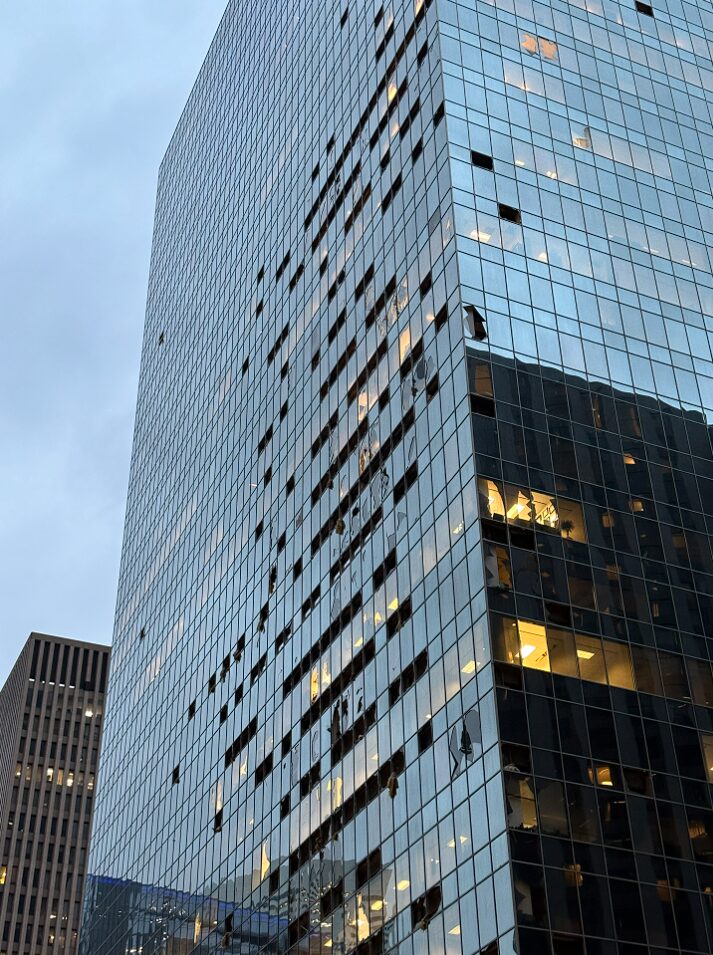Introduction to Derechos
A severe weather phenomenon known as a derecho tore across Southeast Texas, damaging buildings and infrastructure across the greater Houston area. This event occurred one year ago, and experts are still working to understand the storm to prevent similar damage in the future.
The 2024 Houston Derecho
The 2024 Houston derecho had wind speeds that reached an estimated 100 mph, shattering windows in downtown skyscrapers and damaging grid infrastructure that left more than 900,000 residents and businesses without power. The storm also spawned several tornadoes and led to the deaths of multiple people in the Houston area.
Damage Assessment
Dimitrios Kalliontzis, an assistant professor at the University of Houston’s Department of Civil & Environmental Engineering, was part of a team of researchers who collected data shortly after the storm. They were specifically interested in collecting data of different types of damage, mainly focused on structural infrastructure damage, such as buildings in the downtown area, including mid- to high-rises, as well as residential structures in neighborhoods north of Houston.
Research Findings
One of the most interesting findings was that building facades appeared to have different levels of damage depending on their height, Kalliontzis said. In some facades, there was significant damage in lower elevations, but less damage in higher elevations, which could be due to local wind flows that were complex in a way that researchers still don’t understand. Apart from that, significant damage was noticed to a lot of residential structures in the northwest Houston area, mainly on the roofs of the houses because of fallen trees.
Unique Characteristics of Derechos
Space City Weather meteorologist Eric Berger said the winds created by a derecho are unique because they don’t spin like those often associated with tornadoes. A derecho is basically a straight-line wind event that is characterized by being much broader than a tornado and much longer lasting. Derechos are also unique in that they are harder to forecast than other severe weather events, Berger said, because the conditions for them to exist require hot, humid weather and strong winds aloft.
Preparation and Prevention
Kalliontzis and his team are trying to help the Houston region become better-prepared for derechos. The data collected from the 2024 storm is being used to try and reproduce such storms in a computer simulation. In their laboratory, they are trying to create a very high-fidelity model to be able to reproduce phenomena like the derecho storm. The key question is, can they reproduce what happened on their computers?
Future Designs
Kalliontzis and his fellow researchers are trying to create an accurate simulation so that buildings and infrastructure can be better designed to withstand derechos. Since neighboring buildings can affect how a derecho damages a building, simulations need to take that into account rather than testing a stand-alone design. The key here is that the basic design wind speed taken into account when designing an isolated building does not apply when there are multiple buildings in a close vicinity.
Conclusion
In conclusion, the 2024 Houston derecho was a devastating event that highlighted the need for better understanding and preparation for such storms. Researchers are working to reproduce the storm in computer simulations to design buildings and infrastructure that can withstand derechos. By taking into account the unique characteristics of derechos and the effects of neighboring buildings, researchers hope to create more resilient structures that can minimize damage and save lives. The ongoing research and efforts to improve forecasting and preparation will be crucial in mitigating the impact of future derechos in the Houston area.




